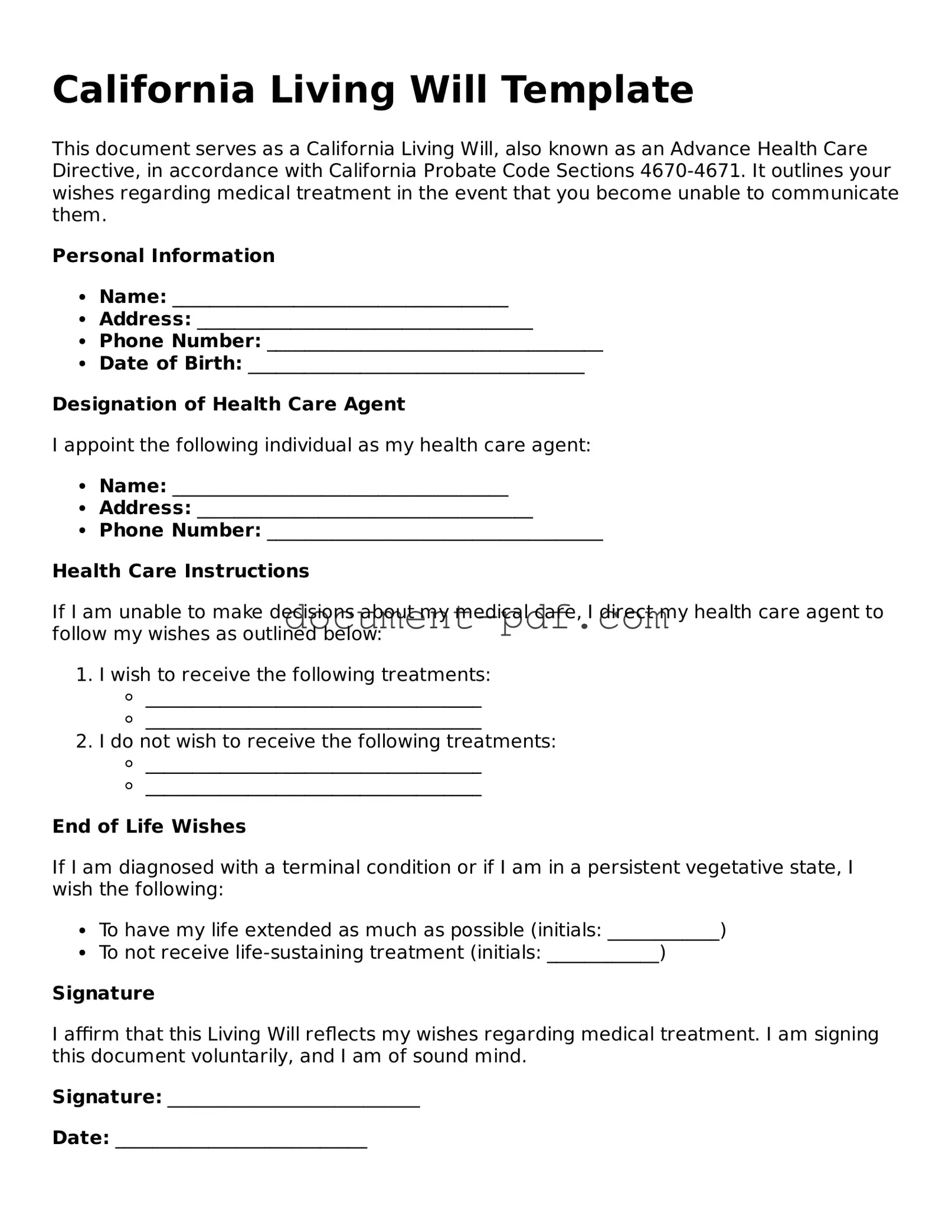California Living Will Template
This document serves as a California Living Will, also known as an Advance Health Care Directive, in accordance with California Probate Code Sections 4670-4671. It outlines your wishes regarding medical treatment in the event that you become unable to communicate them.
Personal Information
- Name: ____________________________________
- Address: ____________________________________
- Phone Number: ____________________________________
- Date of Birth: ____________________________________
Designation of Health Care Agent
I appoint the following individual as my health care agent:
- Name: ____________________________________
- Address: ____________________________________
- Phone Number: ____________________________________
Health Care Instructions
If I am unable to make decisions about my medical care, I direct my health care agent to follow my wishes as outlined below:
- I wish to receive the following treatments:
- ____________________________________
- ____________________________________
- I do not wish to receive the following treatments:
- ____________________________________
- ____________________________________
End of Life Wishes
If I am diagnosed with a terminal condition or if I am in a persistent vegetative state, I wish the following:
- To have my life extended as much as possible (initials: ____________)
- To not receive life-sustaining treatment (initials: ____________)
Signature
I affirm that this Living Will reflects my wishes regarding medical treatment. I am signing this document voluntarily, and I am of sound mind.
Signature: ___________________________
Date: ___________________________
Witnesses
This document must be signed in the presence of two witnesses who are not related to me or entitled to any portion of my estate:
- Witness 1 Signature: ___________________________
- Name: ___________________________
- Date: ___________________________
- Witness 2 Signature: ___________________________
- Name: ___________________________
- Date: ___________________________
This Living Will becomes effective immediately upon signing.
